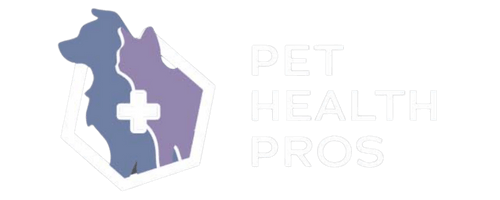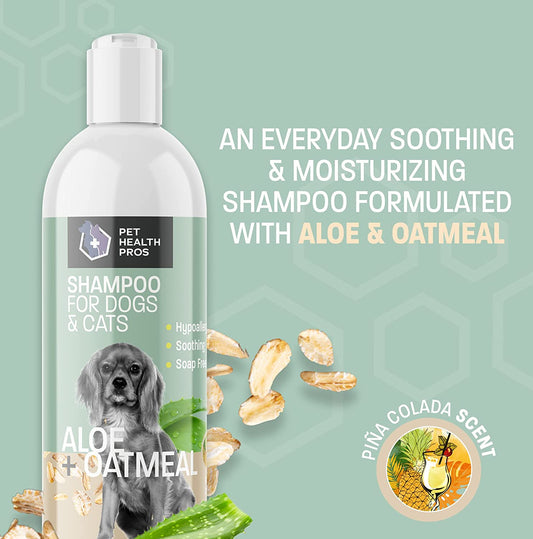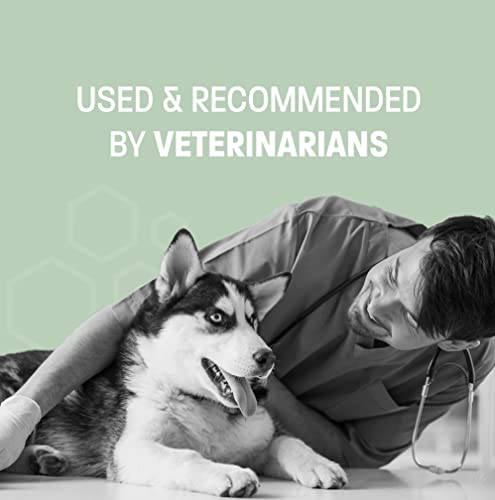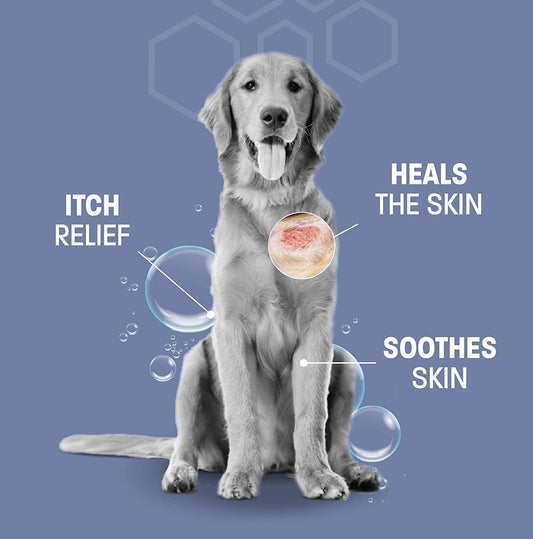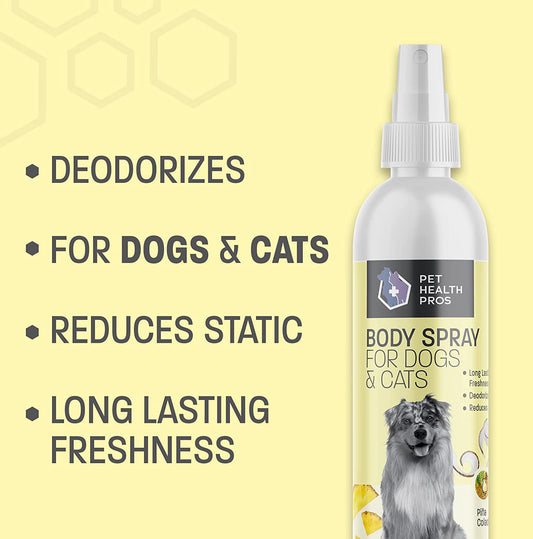Noticing unusual behaviors in your dog can be alarming, especially when related to their anal glands. Pet Health Pros is here to guide you through the common signs of discomfort and how you can offer relief to your furry friend.
Animals have peculiar body parts that may need extra care. One of them is the anal glands in a dog's bum. They play an important role, but can cause issues if not taken care of.
Noticing the symptoms of anal gland problems is crucial for any pet owner. If your pooch is dragging their bum on the floor, licking their anal area often, or has a bad smell coming from their backside, these could be signs of trouble. Also, swelling near their rectal area or discharge could be a sign that something is wrong.
Taking preventive measures is essential to keep your dog's anal glands healthy. Expressing them regularly is a great way - this involves squeezing these sacs to release the fluid inside. However, consulting a vet is necessary to do it correctly and not hurt your pup.
Anal gland issues are quite common among domesticated dogs. This is because their diet and lifestyle has changed from their wild relatives. Knowing about this can help provide proper care for our furry friends.
Being conscious of the signs and symptoms of anal gland problems and seeking professional advice when needed is necessary for our pet's health and well-being. Responsible pet ownership involves not only love and attention but also staying informed about any potential health issues they may have. So pay attention to your pup's behind and take action if any concerns arise regarding their anal glands.
Understanding Anal Glands in Dogs
Dogs have two small sacs, one on each side of their rectum, which are known as anal glands. They produce a smelly, oily liquid which acts as a natural scent marker. It's essential for pet owners to comprehend anal glands in dogs. Five things to keep in mind:
- Dogs have two anal glands.
- These glands can become impacted or infected.
- One sign is scooting or dragging their rear end on the ground.
- Other signs include excessive licking or biting around the backside and a bad smell.
- If left untreated, serious complications like abscesses or ruptures may occur.
Some dogs never experience issues with anal glands, while others may have recurrent issues throughout their lives. If you observe any signs of unease or abnormal behavior with your furry friend, it's best to see a vet.
By knowing about anal glands in dogs, you can take better care of your pet. Regularly check and express your dog's anal sacs when needed is an important part of their grooming. Additionally, keeping an eye out for potential signs of difficulty can avoid more severe problems in the future.
Don't let your furry companion suffer alone. Be observant and proactive when it comes to their anal gland health. Remember, early detection and treatment are key for their comfort and joy. Take action now and show your beloved four-legged friend the care they deserve!
Signs and Symptoms of Anal Gland Issues
Anal Gland Issues: Signs and Symptoms
- Scooting: If your dog is frequently dragging itself across the floor or ground, it could be a sign of anal gland problems. This behavior is often accompanied by discomfort or itching in the anal area.
- Excessive licking: Dogs with anal gland issues may constantly lick their rear end, as they try to relieve the discomfort caused by the swollen or infected glands. This can lead to redness, irritation, and even sores.
- Foul odor: A strong, unpleasant smell around your dog's anus could indicate anal gland problems. The odor is caused by the secretion of fluid from the glands, which can become infected or blocked.
- Difficulty defecating: Dogs with anal gland issues may experience difficulty during bowel movements. This can manifest as straining, pain, or even constipation. It is important to monitor your dog's stool consistency and look for any signs of distress.
- Swelling or inflammation: If you notice swelling or inflammation around your dog's anus, it could be a sign of anal gland problems. The glands may become enlarged, red, and tender to the touch.
In addition to the common signs and symptoms mentioned above, it is important to note that anal gland issues can vary in severity. Some dogs may only exhibit mild discomfort or irregularities, while others may experience more severe symptoms. It is always best to consult with a veterinarian if you suspect any anal gland issues in your dog.
Pro Tip: Regularly expressing your dog's anal glands through professional grooming or veterinarian visits can help prevent anal gland problems.
Your dog's constant licking and scooting may not be a cute dance routine, but rather a telltale sign that their anal glands are itching for attention.
Constant Licking or Scooting
Constant licking or scooting is a typical indicator of anal gland issues in pets. This shouldn't be overlooked; it could lead to further complications.
So, it's crucial to know the signs. For instance:
- Licking the anal area constantly could mean the glands are inflamed or impacted.
- Pets may scoot to ease the irritation or discomfort from affected or infected glands.
- Excessive grooming of the hindquarters or genitals could also point to anal gland issues.
If you spot these behaviors often, it's best to go to the vet for a proper diagnosis & treatment plan. Prompt action can keep your pet healthy & comfy.
Foul Odor from the Rear End
A horrid smell coming from the hind area might mean there's a problem with the anal glands. These tiny pouches contain a smelly liquid that comes out when your pet goes to the bathroom. The odor is usually strong and sharp, causing distress to both the pet and its owner.
Besides the smell, there may be other signs. Your pet may excessively lick or bite their backside. They may also scoot across the floor to try and ease the discomfort. The area around the anus may become red, swollen, or even tender.
It's normal for cats and dogs to have anal gland problems once in a while. But if it happens too often, it can lead to infection or abscesses. If you detect the stench or any of the other symptoms, go see a vet immediately. If left unchecked, it can cause pain and other issues.
By seeing a veterinarian, your pet will get a checkup and the right treatment to tackle the underlying issue. Taking action quickly will help your pet feel better and prevent further problems.
Don't make your pet be quiet about their pain! Reach out to your veterinarian today if you think there's something wrong with their anal glands. Taking care of this problem swiftly will help improve their quality of life and your peace of mind as their owner.
Swelling or Redness in the Anal Area
Anal swelling or redness is a sign of trouble. It could be due to infections, abscesses or blockages. Pain and itching may also be present, making it hard to sit and move. Discharge and a foul smell might also be present. Plus, you may feel heat in the area, which is a sign of inflammation or infection.
Don't wait! See a doctor right away. Delaying could make the condition worse. Don't be scared. Get help for your comfort and anal health. It's worth it!
Steps to Check for Anal Gland Issues
Checking for Anal Gland Issues
To ensure the well-being of your dog, it is important to regularly check for anal gland issues. Here is a simple 5-step guide to help you with this task:
- Observe any signs of discomfort: Keep an eye out for your dog licking or biting their rear end excessively, scooting their bum along the ground, or displaying signs of pain when defecating. These can be indicators of anal gland problems.
- Examine the area: Gently lift your dog's tail and inspect the region around their anus. Look for any swelling, redness, or discharge. If you notice any of these symptoms, it could suggest an issue with their anal glands.
- Check for scent marking: Anal glands excrete a distinct odor, which dogs often use for scent marking. If you detect a foul smell, it may be a sign of anal gland problems.
- Consult a veterinarian: If you suspect that your dog has anal gland issues, it is crucial to seek professional advice. A veterinarian can perform a thorough evaluation and provide appropriate treatment if necessary.
- Regular expression: In some cases, the anal glands may need to be manually expressed. This should only be done by a trained professional, such as a groomer or veterinarian. Regular expression can help prevent the build-up of fluids and potential complications.
Remember, taking prompt action when it comes to anal gland issues is essential for your dog's comfort and overall health.
Proper Restraint and Handling
- When checking for anal gland issues, proper restraint and handling are key.
- Follow these steps to keep your pet safe and comfortable:
- Approach gently from the side, avoiding sudden movements.
- Speak in a calm and reassuring tone.
- With one hand, secure the head, not applying too much pressure.
- With the other, lift the tail to expose the anal area.
- Wear gloves, to protect from infections and odors.
- Release the pet slowly and reward them for cooperation.
- Every animal is unique, so adjust the steps to their size and temperament.
A friend once checked her dog's anal glands. She was unsure, but with advice from her vet and gentle handling, it worked out. Knowing essential procedures like this is important. Master the techniques and you can provide care while maintaining a calm environment.
External Examination of the Anal Area
Examine the outside of the anal area for any abnormalities. This is vital to detect issues with the anal glands, if present.
- See if the skin around the anus is red, swollen or itchy.
- Check for any discharge or bad smell.
- Look for lumps or masses near the anus.
- Check if touching or manipulating the area causes pain.
- Notice any changes in bowel movements or difficulty when pooping.
Also, dogs can act differently when having anal gland problems. They may lick or chew their back side, scoot on the bottom or show signs of discomfort while sitting.
To conduct an external examination of the anal area, use disposable gloves and plenty of clean wipes. This will make the examination and cleaning of the area hygienic and easier.
Expressing the Anal Glands
- Get ready: Put on disposable gloves and find a lit spot to reach your pup's rear. Prepare some paper towels or wet wipes for easy clean-up.
- Position your pup: Gently get them in a standing or lying down position with their tail up. This gives you better access to the anal area.
- Locate the glands: Feel around your pup's anus with gloved hands. You'll find two small sacs on either side. These feel like lumps or swellings beneath the skin.
- Use gentle pressure: With thumb and index finger, press up gently but firmly towards the anus. Don't squeeze too hard! A clear fluid should come out from both glands.
- Clean up: Wipe away any excess fluid or residue with paper towels or wet wipes. Discard them and wash your hands with soap and water.
If you're unsure or see swelling, bleeding, or extreme discomfort, get professional help from a vet. Expressing anal glands is key for your pup's health and comfort. Following these steps will ensure they live a happy and healthy life. Don't miss out!
When to Seek Veterinary Help
Keep an eye out for strange symptoms like scooting, over-licking, or a bad smell from your pup's backside.
If they seem swollen or inflamed, get veterinary help to avoid problems.
Pain when they sit or poop? That might show an anal gland issue.
When at-home treatments like warm compresses don't work, see a vet.
Plus, red blood in the poo can mean they need urgent vet care.
Preventative Care for Anal Gland Issues
Preventative Measures for Anal Gland Issues:
- Regular Anal Gland Expression: Timely emptying of the anal glands by a professional veterinarian can prevent any potential issues.
- Proper Diet: Feeding your dog a high-fiber diet can promote regular bowel movements, reducing the likelihood of anal gland problems.
- Weight Management: Maintaining a healthy weight for your dog can help prevent anal gland issues commonly associated with obesity.
- Hygiene: Regularly cleaning the area around the anus can prevent infections and blockages in the anal glands.
- Regular Exercise: Adequate physical activity can ensure regular bowel movements and help prevent anal gland problems.
- Veterinary Check-ups: Regular check-ups with your veterinarian can help identify and address any potential anal gland issues early on.
Additionally, it is crucial to note that certain dog breeds are more prone to anal gland problems, such as Bulldogs and Cocker Spaniels. Being aware of your dog's breed predispositions can help you take appropriate preventative measures.
Pro Tip: If you notice any signs of anal gland issues, such as excessive scooting or licking of the anal area, consult your veterinarian promptly for proper diagnosis and treatment.
Get ready for some butt clenching moments as we dive into the exciting world of regular gland expressions by a professional.
Regular Gland Expressions by a Professional
Professional gland expressions are essential for good anal gland care. Having this procedure done by a pro regularly helps empty the glands, reducing the risk of infection or discomfort for your pet. It also promotes good hygiene.
Pros have the know-how to do it effectively and safely. They can spot any abnormalities or signs of infection and provide treatment if needed. And they know how to handle and restrain your pet during the procedure.
Your pet's needs vary depending on factors like breed, age, and health. Check with your vet to decide the best frequency for your pet.
We once had a pet owner whose dog was in severe discomfort from impacted anal glands. Despite their home efforts, no luck. Our vet examined the pup and expertly expressed their glands, giving immediate relief. This proves how important professional gland expressions are for your pet's well-being.
Professional gland expressions are vital for your pet's health. Entrust this task to a pro and give your four-legged buddy the best chance at staying healthy and happy.
Dietary Considerations
Proper dieting is key for anal gland prevention. Fiber-filled foods such as pumpkin, sweet potatoes and leafy greens help bowel movements - aiding natural anal gland expression. Omega-3 fatty acids in fish oil reduce inflammation and maintain gland health. Water also helps soften stool and make anal gland emptying easier. Exercise stimulates bowel movements and aids digestion.
Certain breeds like Poodles, Chihuahuas and Bulldogs can be more prone to anal gland issues - so be aware of their needs and take preventive measures. Diet and exercise can stop anal gland issues and keep your pet healthy.
Proper Hygiene Practices
For anal gland health, keeping up proper hygiene practices is key. Here's what you can do:
- Clean regularly with pet-safe wipes or a cloth - this gets rid of debris and buildup.
- Groom your pet to avoid matted fur around the anus.
- Feed them a balanced diet with lots of fiber to help with bowel movements.
- Exercise your pet often - this helps regulate bowel movements.
- Discourage licking or chewing their rear end.
- See a vet regularly to detect, diagnose, and treat any issues.
A vet can give you tailored instructions for your pet. It's best to make these hygiene practices part of your pet care routine.
Conclusion
Recognizing and addressing anal gland issues early can prevent severe complications down the line. Trust in Pet Health Pros to provide you with the knowledge and solutions to ensure your dog remains comfortable and healthy.
We've almost wrapped up our talk about signs your dog may have anal gland issues. Remember, these sacs are normal for dogs. But, if they become impacted or infected, it can cause pain and other health issues.
Other points to remember: certain breeds are more likely to have anal gland problems. Bulldogs, Basset Hounds and Chihuahuas are a few examples.
Fun fact: anal glands serve as scent markers for dogs in the wild. By expressing them, dogs leave an olfactory message for others to understand. This behavior is seen in domesticated dogs too, even though it's not as necessary in our modern world.
Frequently Asked Questions
1. What are anal glands in dogs?
Anal glands are small sacs located on either side of your dog's anus. They produce a smelly fluid that is normally released during bowel movements or when your dog defecates.
2. What are the signs that my dog may have anal gland issues?
Some common signs that your dog may have anal gland issues include scooting or dragging their bum on the ground, excessively licking or biting their anus, foul odor coming from their rear end, swelling or redness around the anus, and difficulty or pain during bowel movements.
3. Why do dogs develop anal gland problems?
There are several reasons why dogs may develop anal gland problems. It could be due to inadequate emptying of the glands, which can occur if your dog's stools are too soft. Other factors include allergies, underlying medical conditions, or anatomical abnormalities.
4. How can I prevent anal gland issues in my dog?
To help prevent anal gland issues, you can ensure your dog has a consistent and balanced diet that promotes firm stool. Regular exercise and an appropriate amount of fiber in their diet can also help with proper bowel movements and gland function. If you notice any signs of discomfort or issues with their anal glands, consult your veterinarian.
5. Can I express my dog's anal glands myself?
While it is possible to learn how to express your dog's anal glands at home, it is generally recommended to have a professional, such as a veterinarian or a groomer, perform this task. They have the necessary experience and can ensure it is done safely and correctly.
6. How are anal gland issues treated?
The treatment for anal gland issues may vary depending on the severity and underlying cause. Your veterinarian may manually express the glands if they are impacted or infected. In some cases, medications such as antibiotics or anti-inflammatory drugs may be prescribed. If the issues are recurrent or chronic, surgery to remove the anal glands may be considered as a last resort.
